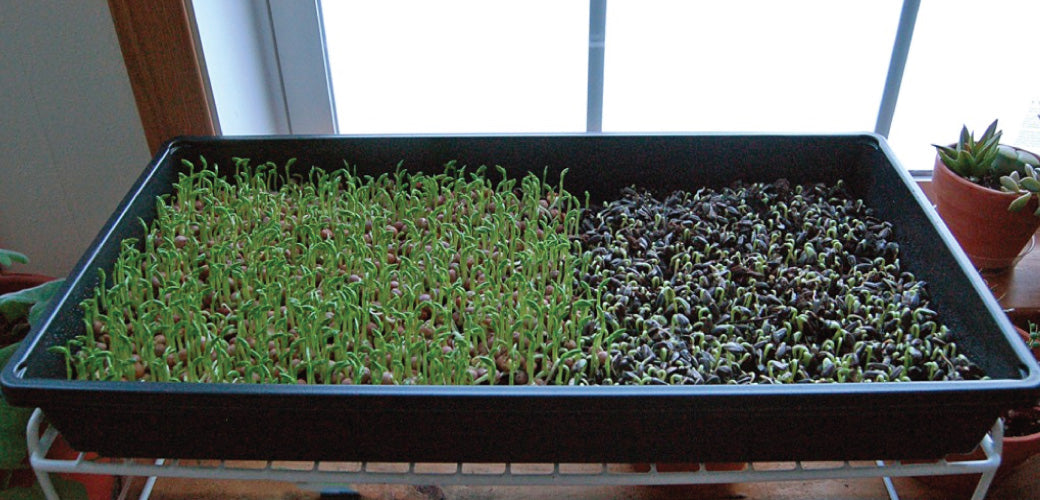No Products in the Cart

As Spring approaches - it’s time to think about sowing your seeds in time for Spring. You’ll need to start now, even when it’s cold outside.
According to the Gaelic calendar, Spring actually starts in February. So you’ll begin to see the buds sprouting on shrubbery and the trees at this time of year, and there will be more light and longer days for growing.
However, we associate Spring in meteorological terms with March 1st. Either way, you’ll want to see some flowers or early vegetable growth when the weather brightens by Easter. Best to get started now. How? Time to germinate indoors, of course!
Let’s take a look at how you can make this happen.
There are many ways to look at this. But, of course, it depends on how you want your garden to grow!


Getting your vegetable garden ready for the full blast of spring growth starts now. It helps to have a more robust seedling and not to waste your seeds by protecting them from the elements.
Here are some vegetable varieties you could start with now.

You may want a ready supply of lovely blooms for your window boxes or beds out front or along the driveway when the weather grows milder. Your early flowers will also be great for feeding the pollinators at the start of the season - another reason to do it!
Here is a list of seeds you should start sowing indoors for bright early spring bloom and that shot of colour to make the neighbours coo.
Here’s a step-by-step guide on how to sow your seeds indoors and help them germinate into seedlings.
Get a purpose-built seed tray or propagator.
Alternatively, recycle some old cardboard, like cut-up toilet rolls or egg packaging, to contain small amounts of compost.
You can also use old yoghurt cups with holes punched in the bottom to allow easy draining. Some people use takeaway boxes with holes poked in the bottom for draining.
The main thing is to find a container that can hold compost and allow water to drain freely.
Fill the pot with seed-friendly or multi-purpose compost. Water the soil to leave it moist and ensure it drains well.
Make sure your soil is healthy and free of debris, pests, insects, and other seeds.
Ensure you get the soil for sourcing commercial potting or purpose-built soil rather than taking it from your garden outdoors.

You need to spread your seeds evenly into the soil. There should be 2cm – 3cm between each source. Make sure each seed is covered with a layer of compost at the same depth as the seed is thick.
You will need clear plastic to put over the compost and seed trays. This will help keep the soil moist and warm - it prevents it from drying out in the winter whilst keeping the temperature even. It may also contain any pests indoors from getting into the soil.
Recycle where you can if you don’t have a purpose-built seed propagator - for example, use cling film, cut open or apply larger old freezer bags. A clear plastic bag sliced to form a single sheet will suffice.
Secure it onto the seed posts/ tray with sticky tape or wrap an elastic band around the pot to hold it in place.

Ideally, the container holding your soil and seeds must be positioned in a warm, naturally lit location with access to sunlight. For example, window sill. If you have a special heated propagator, all the better.
Be careful if you are leaving these on the windowsill – temperatures can drop dramatically at night, so be sure to remove them from the area in the evening towards a warmer location.
Watch the soil for signs of germination. Once you spot signs of growth and see green leaves sprouting - you will need to expose the seedlings.
You should remove the plastic or glass cover and grow them indoors at this stage.

A second pair of leaves, known as ‘true’ leaves, will eventually grow next. When this happens, you’re ready to transplant them into a larger pot or container of soil. This is also known as 'Pricking out' your seedlings.
When handling the seedlings - be gentle and handle them only by their leaves. Pulling at their stems will risk tearing them.
This involves filling in a seed tray with more compost and planting the transplanted grown seedlings in spaces about 5cm apart. This makes it easier for the seedling to progress from the 'seed' stage to the 'growing on' phase.
Ensure the soil is well drained in the new trays or pots.
When inserting them gently into the soil, you must bury the seedlings right up to the base of the first set of leaves.
After about two weeks, the seedlings will grow large enough to be transplanted into bigger pots. Aim for a container at least 7.5cm across.
Alternatively, if the weather is milder, you can plant them outside in well-prepared and well-draining soil.
Conversely, don’t let the soil dry; observe it every day should it need watering to keep it moist.
There are a few things you may want to show for in the local garden or hardware centres:
What will you be growing this winter, and have you got any good advice or tried and tested tips for growing seeds indoors?